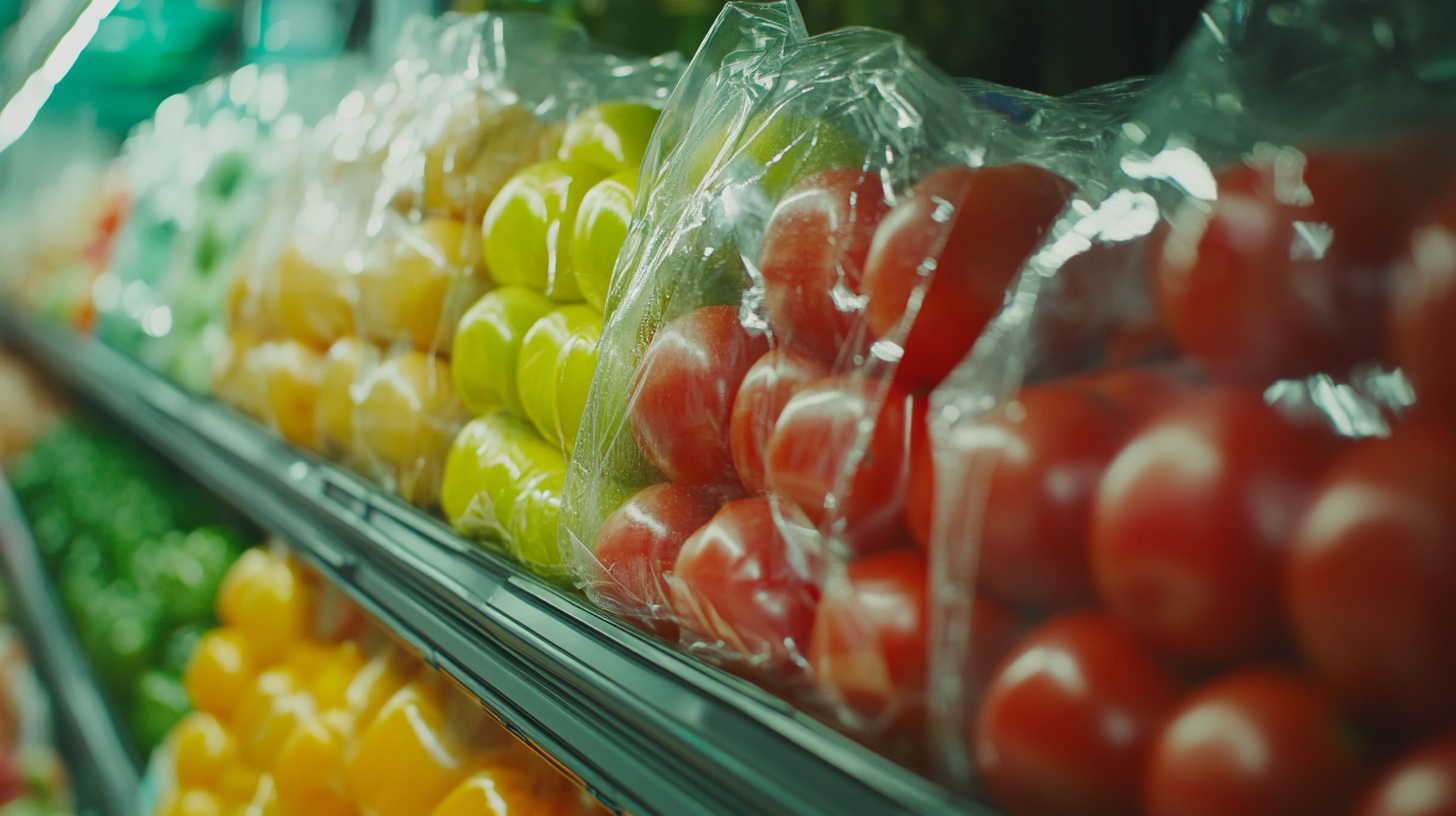ProMach is your partner from start to finish. Our product brands are grouped into distinct business lines that make the most sense to our customers, covering every function of the production line: Filling, Bottling & Capping, Decorative Labeling, Flexibles & Trays, Pharma, Handling & Sterilizing, Labeling & Coding, Robotics & End of Line, and Systems & Integration.
learn moreUnlocking the Benefits of Flexible Packaging for Global Supply Chains
In today's rapidly evolving global market, the significance of Flexible Packaging cannot be overstated. According to a report by Smithers Pira, the global market for flexible packaging is projected to reach $300 billion by 2024, driven by its versatility and sustainability benefits. Flexible Packaging offers companies the ability to adapt their products for diverse consumer needs while reducing material usage and waste, aligning with Consumer Demand for environmentally responsible solutions. Furthermore, as supply chains face unprecedented challenges, adopting Flexible Packaging can enhance efficiency, reduce costs, and improve product shelf-life.
Moreover, industry studies indicate that Flexible Packaging can reduce transportation costs by up to 25% due to its lightweight nature and space-saving characteristics. As businesses strive for increased operational resilience, the shift to Flexible Packaging emerges as a strategic advantage, enabling quicker response times to market fluctuations and consumer preferences. With a growing emphasis on sustainability and efficiency, the integration of Flexible Packaging into global supply chains is not just a trend; it represents a pivotal transformation within the industry that stakeholders must embrace to remain competitive.

The Growing Demand for Flexible Packaging in Global Markets
The global packaging landscape is undergoing a significant transformation, largely driven by the growing demand for flexible packaging solutions. Businesses in various sectors are increasingly recognizing the advantages that flexible packaging brings to their supply chains. This shift is not only about enhancing product shelf life but also about increasing operational efficiency and reducing waste. As consumers seek more sustainable options, flexible packaging provides an innovative answer, allowing for lighter materials that require less energy to transport and produce. Moreover, flexible packaging is proving to be a game-changer in meeting the needs of diverse global markets. Its adaptability allows manufacturers to tailor their packaging solutions to different regional preferences and regulations easily. Whether it’s finding the right barrier properties to maintain freshness, or adjusting the design to cater to local aesthetics, flexible packaging offers endless possibilities. This responsiveness to market dynamics enhances competitiveness and fosters customer loyalty. The emergence of e-commerce has further propelled the shift toward flexible packaging. As online shopping continues to increase, brands are looking for packaging solutions that not only protect products during transit but also make them visually appealing for consumers. Flexible packaging checks all those boxes, thus becoming a preferred choice for businesses aiming to streamline their supply chain operations while catering to the growing expectations of today's eco-conscious consumers.

Key Advantages of Flexible Packaging Over Traditional Materials
Flexible packaging has emerged as a transformative solution in global supply chains, offering several advantages over traditional materials. According to a report by Smithers Pira, the flexible packaging market is projected to grow at a CAGR of 4.4%, reaching a value of over $300 billion by 2024. This growth underscores the mounting preference for flexible materials, which are lauded for their lightweight nature and reduced environmental impact. Unlike rigid packaging, flexible options like pouches and films contribute to lower transportation costs and reduced carbon footprints due to their space-saving attributes.
One of the key advantages of flexible packaging is its superior barrier properties. Flexible materials not only enhance product shelf life but also protect against moisture, air, and light, which are crucial for perishable goods. A detailed study by the Flexible Packaging Association highlights that products packaged in flexible materials have a 30% longer shelf life compared to those in traditional rigid packaging. This extended longevity not only reduces waste but also allows companies to optimize their inventory management and distribution strategies, making it an attractive option for global logistics networks.
Additionally, flexible packaging enables innovative design possibilities that traditional materials cannot offer. With advancements in printing technology, brands can now leverage high-quality graphics and branding on flexible pouches, enhancing consumer appeal. A report from MarketsandMarkets indicates that the demand for aesthetically pleasing and convenient packaging is driving growth in the flexible packaging sector, as 60% of consumers prioritize packaging design when making purchasing decisions. This ability to create visually striking and functional packaging can significantly boost brand loyalty and market share in a competitive landscape.

Impact of Flexible Packaging on Reducing Supply Chain Costs
Flexible packaging has emerged as a pivotal element in redefining global supply chains, particularly in reducing costs while enhancing sustainability. As e-commerce continues to expand, the flexible packaging market is expected to grow significantly, with projections estimating a rise from $34.56 billion in 2024 to approximately $72.45 billion by 2033. This growth underscores the importance of leveraging flexible packaging solutions to streamline logistics, minimize waste, and optimize storage efficiency.
The impact of flexible packaging on supply chain costs is multifaceted. By adopting right-sized, automated packaging solutions, businesses can reduce the amount of material needed while decreasing shipping costs through better space utilization. This efficiency not only cuts transportation expenses but also aligns with broader sustainability goals as companies increasingly focus on minimizing plastic waste and embracing circular economy principles. Major retailers have initiated sustainable packaging initiatives, highlighting the shift toward packaging solutions that are both economically and environmentally viable.
Moreover, innovative advancements in packaging technology are driving improvements in product protection and transportation efficiency. The evolution of eco-friendly packaging solutions contributes to safeguarding products against damage during transit, thereby reducing losses and ensuring timely deliveries. As organizations continue to prioritize environmental performance, the integration of sustainable practices within the packaging sector is becoming a competitive advantage in the supply chain management landscape, which is projected to experience rapid demand growth in the coming years.

Sustainability Trends in Flexible Packaging and Their Global Implications
The rapid evolution of sustainability trends in flexible packaging has significant global implications, particularly for supply chain dynamics. As businesses increasingly prioritize environmental responsibility, flexible packaging offers innovative solutions that not only reduce waste but also enhance efficiency. By utilizing materials that are lightweight and often recyclable or compostable, companies can lower their carbon footprint while maintaining product integrity throughout the supply chain.
One of the most compelling aspects of flexible packaging is its ability to adapt to various products and market demands. This adaptability allows for optimal space utilization during transportation, reducing fuel consumption and associated emissions. Furthermore, with the rise of e-commerce, flexible packaging can provide the protection and convenience necessary for shipping a variety of goods, all while supporting sustainability goals.
The global shift toward circular economy practices further amplifies the benefits of flexible packaging. Many companies are embracing initiatives to use recycled materials in their packaging processes, contributing to a reduction in the reliance on virgin plastics. This movement not only meets the growing consumer demand for sustainable products but also aligns with international regulatory trends aimed at creating more responsible supply chains. As businesses navigate this changing landscape, flexible packaging emerges as a key player in achieving both environmental and operational objectives.
Future Innovations Driving the Evolution of Flexible Packaging Solutions
The landscape of flexible packaging is evolving rapidly, driven by innovations that meet the dynamic needs of global supply chains. According to a report by Smithers Pira, the flexible packaging market is projected to reach $300 billion by 2024, underscoring the growing preference for lightweight and cost-effective solutions. These advancements not only cater to product protection and shelf life extension but also prioritize sustainability—a top concern for consumers and brands alike.
One of the significant innovations in flexible packaging is the development of biodegradable and compostable materials. Companies like Mondi and Amcor are at the forefront, creating packaging solutions that minimize environmental impact. The global shift towards sustainable packaging is highlighted in a survey by Nielsen, which found that 73% of global consumers are willing to change their consumption habits to reduce environmental impact. This trend indicates that innovations in material science will continue to play a pivotal role in the evolution of flexible packaging.
Moreover, smart packaging technologies are revolutionizing how products are packaged and tracked throughout the supply chain. Technologies such as QR codes and RFID tags enable real-time monitoring and authentication, enhancing transparency and efficiency. A report from MarketsandMarkets predicts that the smart packaging market will grow to $44.3 billion by 2027, reflecting the increasing demand for solutions that provide both convenience and security. As these innovations continue to emerge, flexible packaging will likely become an essential component in the future of global supply chains, adapting to meet the complex challenges of modern logistics and consumer demands.
